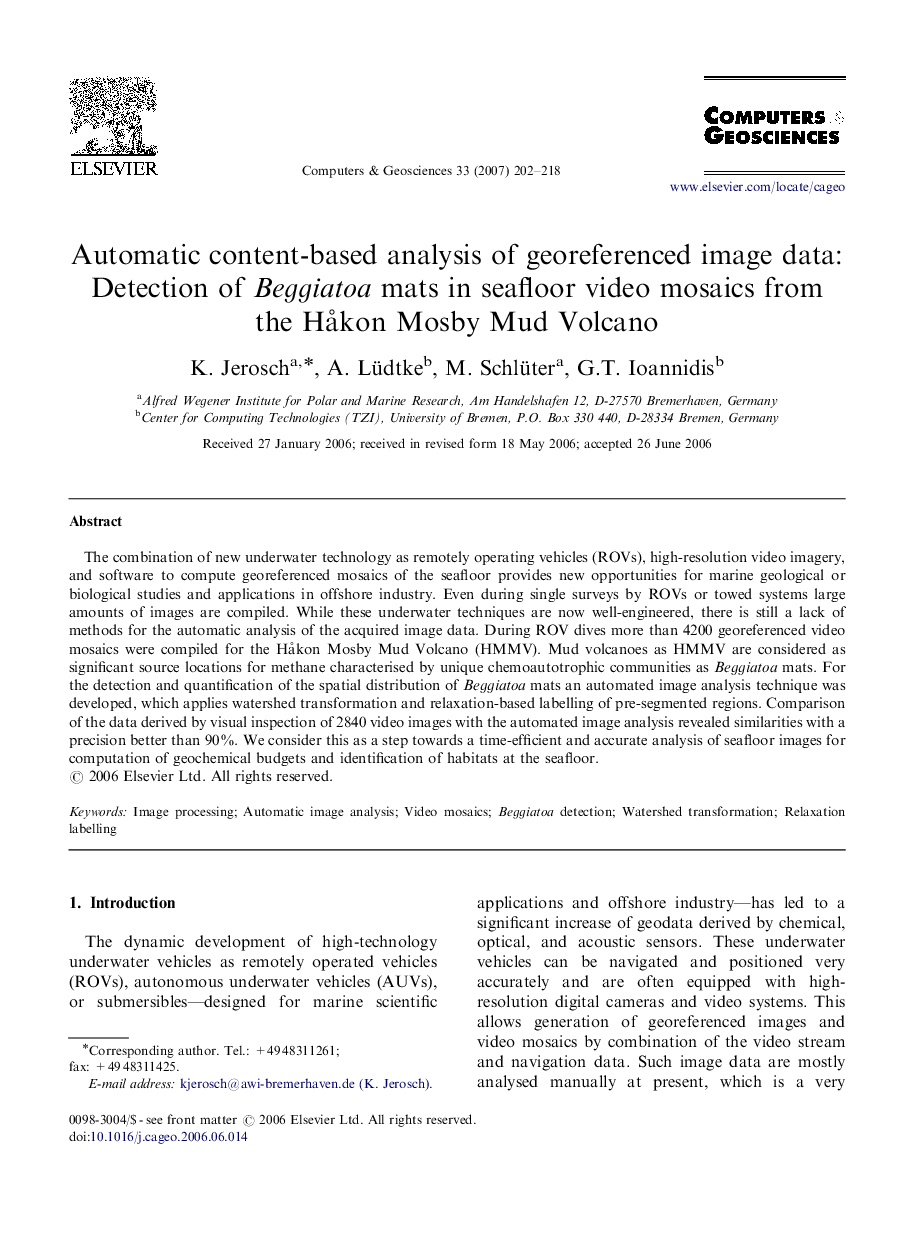| Article ID | Journal | Published Year | Pages | File Type |
|---|---|---|---|---|
| 508463 | Computers & Geosciences | 2007 | 17 Pages |
The combination of new underwater technology as remotely operating vehicles (ROVs), high-resolution video imagery, and software to compute georeferenced mosaics of the seafloor provides new opportunities for marine geological or biological studies and applications in offshore industry. Even during single surveys by ROVs or towed systems large amounts of images are compiled. While these underwater techniques are now well-engineered, there is still a lack of methods for the automatic analysis of the acquired image data. During ROV dives more than 4200 georeferenced video mosaics were compiled for the HÅkon Mosby Mud Volcano (HMMV). Mud volcanoes as HMMV are considered as significant source locations for methane characterised by unique chemoautotrophic communities as Beggiatoa mats. For the detection and quantification of the spatial distribution of Beggiatoa mats an automated image analysis technique was developed, which applies watershed transformation and relaxation-based labelling of pre-segmented regions. Comparison of the data derived by visual inspection of 2840 video images with the automated image analysis revealed similarities with a precision better than 90%. We consider this as a step towards a time-efficient and accurate analysis of seafloor images for computation of geochemical budgets and identification of habitats at the seafloor.
